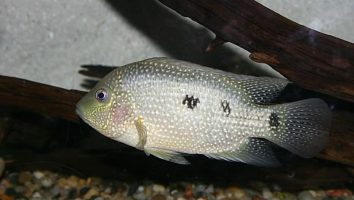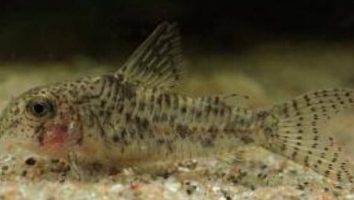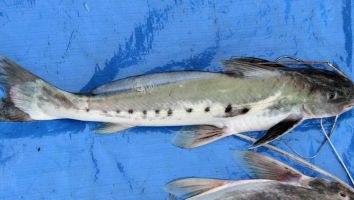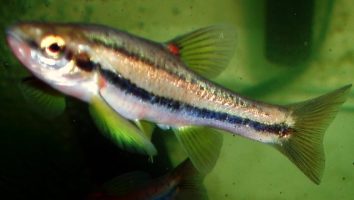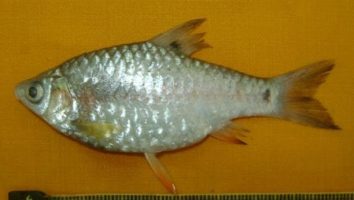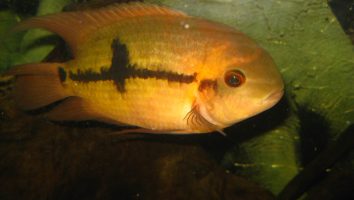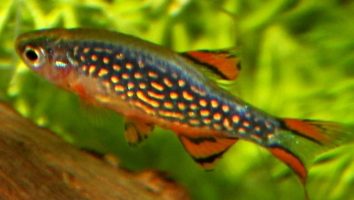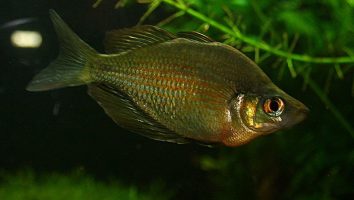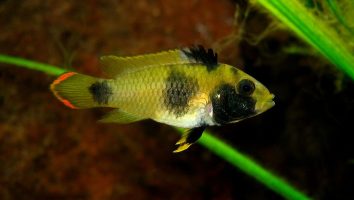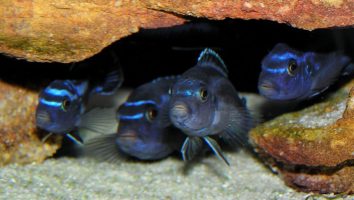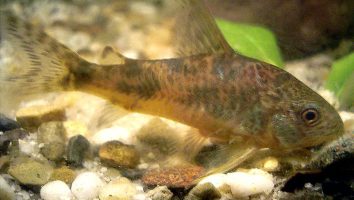The threestripe corydoras is a peaceful and social freshwater fish that is perfect for beginners. This species is very easy to care for and is a great addition to any community tank.
This guide will teach you everything you need to know about threestripe corydoras care. You’ll learn about their diet, size, lifespan, and more!
Table of contents
Species overview
The threestripe corydoras (Corydoras trifasciatus) is a freshwater fish that’s native to South America. It’s found in a wide range of habitats from Peru all the way down to Brazil.
They prefer slow-moving waters with a lot of vegetation, but they can adapt to a wide range of other conditions.
One of the most notable things about the threestripe corydoras is that it’s a schooling fish. This means that it does best when it’s kept in groups of at least six.
The threestripe corydoras is a peaceful fish that’s compatible with a wide variety of tank mates. It’s a popular choice for many freshwater aquariums.
Appearance
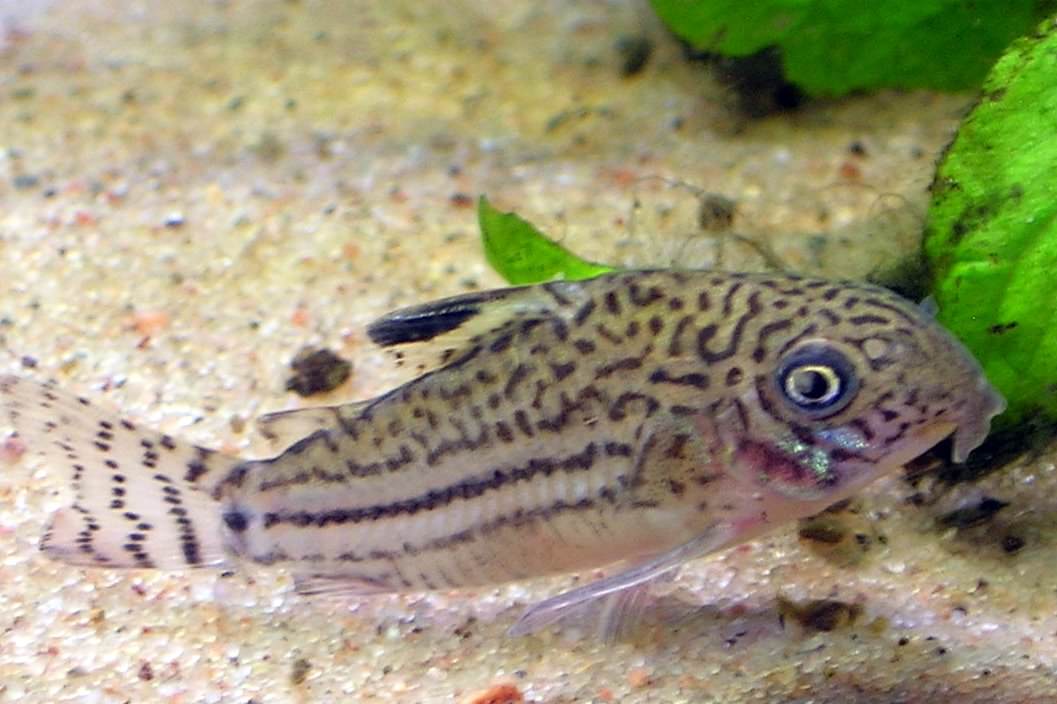
As you can probably guess from their name, the most striking feature of these fish is the three black stripes that run down their body.
These stripes start at the base of their dorsal fin and end right before their tail fin.
The background color of their body is a light tan/beige color. This can sometimes look a bit like a pale yellow.
The fins on these fish are all very standard for a Corydoras. They have a small dorsal fin that’s located about two-thirds of the way back on their body.
Their anal fin is located just behind their dorsal fin and is the same size. Threestripe Corydoras have a forked tail fin that’s relatively large.
Their pectoral fins are small and located just behind their head. These fins help them to maneuver and change direction quickly.
Lifespan
Threestripe corydoras have a lifespan of around 5 years. This can change based on a number of factors, but that’s the average.
As with any other fish, the lifespan of Threestripe corydoras can be impacted by the quality of care they receive. If they’re in a well-maintained tank with good water quality and a healthy diet, they’ll likely live on the higher end of the spectrum.
Size
These little guys only grow to be about 2.5 inches long when fully matured.
Tank
Tank Size
The recommended minimum tank size for Threestripe Corydoras is 10 gallons. This is assuming you’re keeping them in a school of at least 5 or 6 fish (which you should).
We personally recommend a slightly larger tank if you can accommodate it. Every extra space will make a big difference and allow you to keep a larger school or more tank mates if you’re interested in a community tank.
Water Parameters
As with any fish, to ensure a long and healthy life it is important to maintain water conditions that are as close to their natural habitat as possible.
The Three Stripe Cory is a tropical fish that is found in the slow moving rivers and streams of South America. In the wild, the water temperature is typically between 72 and 79 degrees Fahrenheit with a neutral to slightly acidic pH.
To replicate these water conditions in your home aquarium, use a water heater to maintain a consistent water temperature between 72 and 79 degrees. You can test the pH of your water with a simple home testing kit.
A good rule of thumb is to do a 25% water change once a week to maintain water quality and to help keep the nitrate levels low.
- Water Temperature: 72-79 degrees Fahrenheit
- pH Levels: 6.5-7.5
- Water Hardness: 2-12 dGH
- Alkalinity Levels: 4-8 dKH
What To Put In Their Tank
When it comes to setting up the inside of an aquarium for Threestripe Corydoras, you can be as creative as you want. There aren’t any specific things that this species NEEDS to have, which gives you plenty of options.
We recommend some of the standard decorations that you find in a lot of freshwater tanks. There are a ton of great plants you can include (like hornwort or water wisteria). You can even throw in some floating aquarium plants too!
Rocks, driftwood, and caves are all suitable as well. It’s important to avoid going overboard with this since these fish like some room to swim.
Also, if you’re keeping your Threestripe Corydoras in a smaller tank then it’s going to be difficult to include a lot of this stuff anyway.
A classic gravel substrate is always a good choice, but you can do with something soft and sandy if needed too (use other species you keep as a guide with this).
Common Diseases
Threestripe corydoras are a hardy species of fish that don’t often get sick. However, that doesn’t mean that they can’t get sick at all.
There are a few diseases that these fish are particularly susceptible to. The most common is ich, which is a parasite that can cause white spots to form on the body of your fish.
If left untreated, ich can be fatal. However, it is fairly easy to treat if you catch it early.
Another disease that these fish can get is called “swim bladder disease”. This is a condition that affects the swim bladder, and can cause your fish to have trouble swimming.
If you notice that your fish are having difficulty swimming, or floating abnormally, it’s important to take them to the vet as soon as possible.
As with any other fish, the best way to prevent these diseases is to maintain a clean and stable tank. If you keep the water quality high, and the stress levels low, your fish will be much less likely to get sick.
Behavior & Temperament
The threestripe corydoras is a peaceful fish that does well in community tanks. It’s a bottom-dweller that spends the majority of its time scavenging for food.
This fish is nocturnal, so you won’t see much of it during the day. It comes out to feed at night and spends the rest of the time hiding.
The threestripe corydoras is a social creature that does best in groups. It’s not uncommon for these fish to school together. When they’re in a group, they’re much more active and their colors are more vibrant.
Tank Mates
Threestripe corydoras are a schooling species. In the wild, they live in large groups for protection. In the home aquarium, you should keep them in groups of at least six.
This species is also relatively peaceful. They’re not known to be fin nippers or harass other fish. As a result, they make good tank mates for a wide range of species.
Here are some of the best threestripe corydoras tank mates:
- Guppies
- Tetras
- Danios
- Mollies
- Platies
- Swordtails
- Rainbows
- Barbs
Breeding
The threestripe corydoras is a peaceful and easy to care for fish that’s perfect for beginner aquarium hobbyists. They’re also one of the easiest fish to breed in captivity!
As with most fish, you’ll want to start by setting up a separate breeding tank. This tank should be at least 10 gallons and should have soft, acidic water. You can achieve this by using reverse osmosis water or by adding peat to the filter.
The next step is to add a few inches of substrate to the bottom of the tank. Corydoras are bottom-dwellers, so they’ll appreciate a soft substrate to sift through.
After the substrate is in place, you can add some plants and décor. Corydoras like to have plenty of places to hide, so be sure to include caves, rocks, and driftwood.
When the tank is set up, it’s time to add the fish. You’ll want to add at least 6 fish, but more is better. It’s also important to make sure that you have more females than males. A ratio of 2:1 is ideal.
Once the fish are in the tank, you can sit back and relax. These fish are known for their peaceful nature and they’ll take care of the rest!
You’ll know that spawning has occurred when you see the females depositing their eggs on the plants and décor. The males will then fertilize the eggs.
Once the eggs are fertilized, the parents will do their best to protect them. However, it’s still a good idea to remove the adults from the tank to avoid them from eating the eggs.
The eggs will hatch in about 5 days. Once they hatch, you can start feeding the fry baby brine shrimp or other small foods.
Conclusion
The Three-Stripe Corydoras is an excellent addition to any freshwater aquarium. They’re relatively easy to care for, are peaceful community fish, and their unique coloration is sure to stand out in your tank.
We highly recommend them to any fish owner, regardless of experience level.
If you have any questions about this fish or anything else, feel free to reach out to us. We’re always happy to help fellow fish owners!

